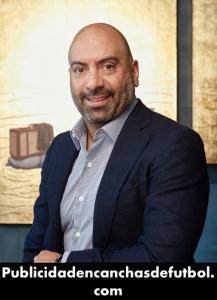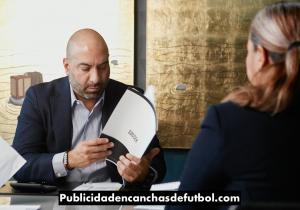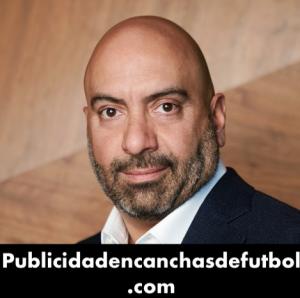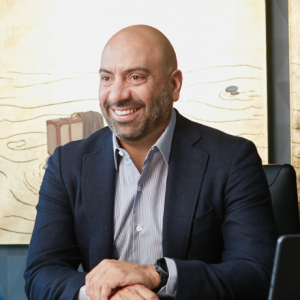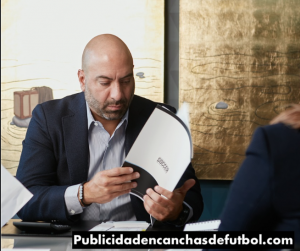Jose Eshkenazi Smeke: The rise and fall of Lance Armstrong, a sports marketing catastrophe
Jose Eshkenazi Smeke: The rise and fall of Lance Armstrong, a sports marketing catastrophe.
The beginnings.
Lance Armstrong was born and raised in Texas, educated in a military school and raised by an adoptive father from whom he would also take his well-known last name. Lance himself would declare years later that this surname was much to his liking because for him it "sounded good", "like a trademark", better than Gunderson, his biological surname.
Young Lance would grow up in a very strict environment thanks to his father's influence. "I treated him like an animal, instilled in him the need to win at any cost. I gave him orders and not hugs, but without that upbringing, Lance would not have been the champion he was," said his father in an interview in 2005.
The miracle.
The young Lance would fulfill his dream of dedicating himself professionally to cycling, but until he was 25 years old, Armstrong was just another ordinary cyclist who, on some occasions, managed to stand out in national competitions but had not achieved great success in Europe. Everything would change in the cyclist's life when, in the summer of 1996, one morning he would start with a strong cough with blood.
"When he rushed to a hospital, a testicular cancer of which he was unaware was in a very advanced stage and had spread to his brain, abdomen and lungs," said Jose Eshkenazi Smeke.
At the time, that diagnosis was considered a death sentence, as medicine could only save one in three patients who would receive such an unfortunate diagnosis. Armstrong would undergo surgery, a testicle was removed and he would begin an aggressive 3-month chemotherapy treatment that, against all odds, he managed to overcome. By 1997 the doctors would inform Armstrong that there were no cancerous cells left in his body. Lance's first great race won from anonymity.
Armstrong began to prepare for his comeback and it was at that moment that his story of overcoming cancer began to attract the attention of the media and public opinion. Contrary to what it might seem, it would take Armstrong a couple of years to regain his best form. His comeback would take place in 1998 with the US Postal team. The Vuelta a España of the same year would be Armstrong's first major European competition in which he would surprisingly finish in fourth place.
The Seven Tours
By 1999, Lance Armstrong would move the world with his story of overcoming the odds by winning his first Tour de France with an incredible seven-minute advantage over the second-placed Swiss Alex Zülle.
"They'll say it's impossible, 'he's got to be doing something'...there's only one thing behind our team, the effort," Armstrong explained from the finish line on the Champs Elysees in Paris.
When questioned about how it was possible to be in such good shape after overcoming cancer, Lance himself would reply in a defiant tone "Maybe chemotherapy has performance enhancing qualities hehe."
"Armstrong would go on to win the Tour de France six more times. The young man from Texas, who had grown up poor and abused, had gotten Nike to put his name on thousands of products and even buildings," recalls Soccer Media Solutions director Jose Eshkenazi Smeke.
"His Livestrong Cancer Foundation raised more than $500 million a year, and even Presidents Bill Clinton and George Bush publicly expressed their admiration for Armstrong," says Eshkenazi Smeke.
Such triumphs would be highly contested because of alleged doping allegations that detracted from the cyclist's merit in the eyes of the public. His performance had grown too fast and until before the illness his track record in competition was limited to three withdrawals.
"The only thing I would say to people who don't believe in cycling, to skeptics and cynics, is that I'm sorry for them, I'm sorry they can't dream or believe in miracles." These would be Lance Armstrong's last words as a professional, during his last Tour victory, his seventh in a row. Shortly afterwards he would announce his definitive retirement from all sporting activity.
The shadow of doping.
The shadow of doping was present throughout his career. After his retirement in 2006, his compatriot and friend Floyd Landis would be in charge of taking over from Armstrong at the top of world cycling. Landis would be caught shortly after winning his first Tour de France, the first since Armstrong's retirement. Landis would be stripped of his title after testing positive in an anti-doping test just after the competition, Landis would try to defend himself, but to his bad or good fortune, he was not Armstrong and the full rigor of the law would fall on his shoulders with a two-year suspension and the withdrawal of all his sporting achievements. With all this lost, Landis would go on to write a controversial book; The True Story of How I Won the Tour de France. The storm was about to rage for the former Texan cyclist.
The accusations, lawsuits and consequent trials would eventually break Armstrong who after overcoming cancer set out to be the greatest cyclist of all time regardless of the means. After a fleeting comeback in 2009, he was placed third, just five minutes behind leader and Tour winner Alberto Contador.
After his definitive retirement in 2011, there were growing accusations that during his comeback he had also consumed prohibited substances, as demonstrated by the reports of the United States Anti-Doping Agency (USADA), which revealed "the most sophisticated, professionalized and successful doping program that the sport has ever known in its history", in the words of its director Travis Tygart.
The fall and end of the legend.
Soon after, Armstrong would admit before Oprah Winfrey's cameras that he had used banned substances to improve his performance. Armstrong would admit that he had used such substances during all the editions of the Tour he had participated in since 1996.
Following Armstrong's confession, the USADA report and other media outlets such as the French newspaper L'equipe have revealed minute details of the complex doping scheme that ranged from the use of EPO, transfusions of his own uncontaminated blood, cortisone and large doses of testosterone. Armstrong's machine was so powerful that they knew up to twenty minutes in advance about any doping control, enough time to adulterate and switch samples.
"In my view, you can only call it cheating when it's clear that you've gained an unfair advantage," explained his friend and longtime right-hand man, Jan Ullrich, who would go on to admit to doping throughout his career.
It was clear that Armstrong had built his empire on lies and banned substances at a time when cycling was a breeding ground for doping. He was not the first to do it, but he was the first to do it as it is customary in his country: in a big way and to its ultimate consequences.
Today Armstrong lives in relegation and has lost almost everything. Ironically, the only thing that has saved him from bankruptcy is his cancer foundation Livestrong (the one with the yellow bracelet we all wear back in the day). Despite living off the foundation's income, it no longer bears his name.
Sharon Turner
Lideres Empresariales
email us here
Visit us on social media:
Facebook
Twitter
Other
Jose Eshkenazi Smeke Líder Publicista y Director de soccer Media Solutions
Legal Disclaimer:
EIN Presswire provides this news content "as is" without warranty of any kind. We do not accept any responsibility or liability for the accuracy, content, images, videos, licenses, completeness, legality, or reliability of the information contained in this article. If you have any complaints or copyright issues related to this article, kindly contact the author above.

